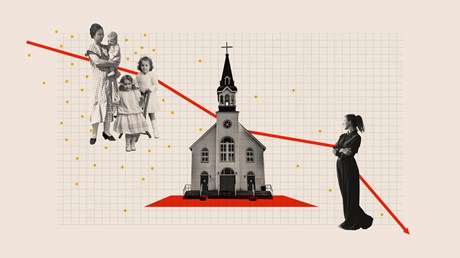If current rates continue, most religious communities in America will shrink by more than half within three generations. But nondenominational Christianity might buck that trend.

Birth rates in the United States are near record lows, but not for everyone.
Under the surface of the fertility decline is a little-noticed fact: Births have declined much more among nonreligious Americans than among the devout.
Data from the National Survey of Family Growth (NSFG) from 1982 to 2019, along with data from four waves of the Demographic Intelligence Family Survey (DIFS) from 2020 to 2022, point to a widening gap in fertility rates between more religious and less religious Americans.
In recent years, the fertility gap by religion has widened to unprecedented levels. But while this difference may comfort some of the faithful who hope higher fertility rates will ultimately yield stable membership in churches and synagogues, these hopes may be in vain. Rates of conversion into unfaith are too high, and fertility rates too low, to yield stable religious populations.
Past religious fertility
Since 1982, the NSFG has asked respondents about their religious attendance and their recent fertility history. In recent years, it has operated as a continuous annual survey.
As a result, data from over 70,000 women surveyed from 1982 to as recently as 2019 can be used to estimate fertility rates for three broad groups of women: those without any religious affiliation, those with religious affiliation but less than weekly attendance, and those with at least weekly attendance.
Total fertility rates are estimated by using a given group’s current birth rates by age to guess how many children a woman would end up having over the course of her life. In practice, however, birth rates shift as women get older, and of course religious identity can change over time, as well, so fertility measures of this kind are unlikely to perfectly ...
from Christianity Today Magazine
Umn ministry




.gif)

.gif)
.gif)
